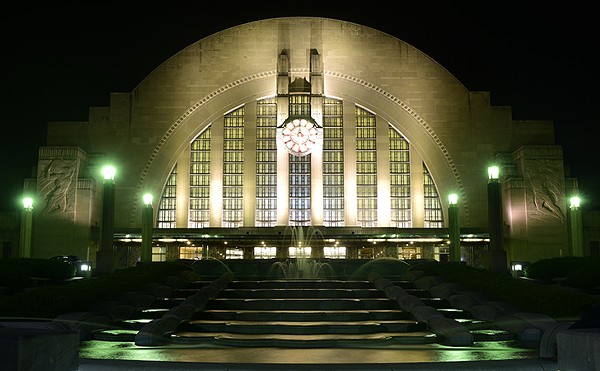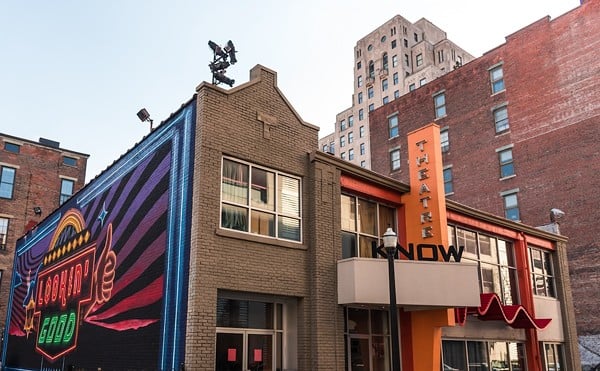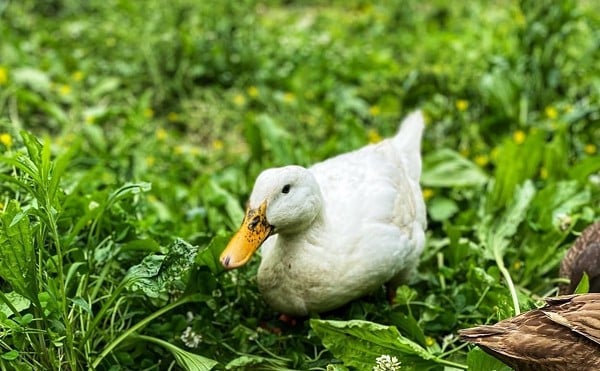(Editors' Note: CityBeat asked art writer Matt Morris, an artist himself who works with several galleries organizing shows, to talk about his experience witnessing and participating in Cincinnati's alternative-arts scene during a very tough year, 2009)
Cincinnati’s vibrant community of alternative-exhibition spaces is my first love in this area. I am boastful of the innovations I witness in these unlikely places, where I not only exhibit my own installations but also, in several cases, help organize and curate exhibitions. I also write as an art critic for CityBeat and other publications, though I gracefully avoid reviewing my own endeavors, of course.
I have worked with the venerable alternative gallery semantics since moving to my beloved neighborhood Brighton, where semantics is located, a couple of years ago. This autumn, I was part of the collective that opened the new U.turn Art Space just up the street from semantics.
We felt we could fill a gap in our visual landscape and that learning how to bring recent creative efforts to light during an economic recession — a time of challenge for artists — would strengthen our resolves towards making art in the future.
I believe that creative types, innovators and art movers-and-shakers are compelled by things we haven’t yet seen. Many of our city’s alternative galleries offer intellectual experiences — they are refined in their research into how our senses (visual or otherwise) can inform our life experiences in poetic, surprising ways.
I see such efforts as a requirement for growth in the field, a necessity that trumps the financial concerns and malaise of 2009. (Not to dismiss the economics of alternative-art spaces in Cincinnati — they’re a very real concern for a gallery such as U.turn, which seeks to profit very little from projects with local, national and international artists.)
For me personally, as an artist, it has been a rewarding year. I have not only had the opportunity to exhibit in well-loved venues like Aisle Gallery but also been able to show — and come to know — less likely exhibition spaces, such as the stone staircase at Mount Auburn Presbyterian Church or the Campbell County Library.
This year, Base Gallery on Main Street in Over-the-Rhine closed its doors. In operation since 1992, it had an unusually long life for an alternative gallery. Its passing seemed matched by a general drop in enthusiasm and quality at the other Main Street galleries. The occasionally notable exhibitions (Jake Constantine or Molly Donnermeyer at Creative Gallery, Bill Davis’ “Palimpset Series” at Iris Bookcafe) still did not recall the full energy I experienced there when I first moved to Cincinnati in 2003. Let’s add renewed passion on Final Fridays to our lists of hopes for 2010.
Overall, these are what I found to be my the most moving alternative- and contemporary-art experiences in Cincinnati this year:
• Our inaugural exhibition at U.turn, Brought To You By (Oct. 3-30), had a surprisingly high attendance. The serendipitous interplay between 10 distinct artists (some based locally and others across the country) commented on the persistence of Post-Minimalism, an emphasis on materials before manipulation, the ephemeral and dispersed qualities possible through Installation and a skepticism towards the relationship between art and commerce that is usually taken for granted in gallery projects.
• Touch Faith at semantics (Nov. 7-28). Guest curator Jeffrey Cortland Jones brought together an accomplished set of artists from around the country to look at current practices in abstraction and painting. I will never forget the subtle and deeply moving monochrome “On the Back of a Hurricane (for Rudolf de Crignis),” a simple blue rectangle that employed a plastic shopping bag for its color and texture.
• Trace by Carmel Buckley, Weston Art Gallery (June 26-Aug. 30). This year, I was reminded of Arthur C. Danto’s crucial dictum, “Inevitably, then, art is going to be mysterious,” through Buckley’s work as an artist-cumarcheologist in a series of idiosyncratic, altered found objects and minimal monotypes. They blended the spirit of her home with that of the place where the viewer encounters her work — a gallery.
• Joey Versoza at Art Damage Lodge (May 1). When Versoza reconceived his quiet video art into a strange and beautiful film festival this summer, there was a mounting suspense, a greater risk of freefalling into the sublime than in his gallery exhibitions. He made clever use of our cultural training to sit and watch movies to better engage us with his soft philosophies and melancholy as they work through themselves in semi-static films.
• Abrade by Tony Luensman, Clay Street Press (Oct. 30-Dec. 12). Luensman’s installations of deconstructed electronics were paired with a series of prints that emphasized the “objectness” of the plates to form an exquisite exhibition. Blind (no ink or foil used) embossings of chain recalled prayer beads and references to Zen philosophy and quiet meditation abounded. But to arrive at another print that spelled out the text “CANDYASSFRAMEOFMIND” was to recognize the submerged humor, skepticism and pleasures expressed in the work. I wish this unceasingly elegant and haunting show could have remained on display much longer.
• Dreams and Trees by Peter Voshefski, Aisle (April 3-May 8). All of Aisle’s exhibitions this year offered unpretentious brilliance, a tribute to the curatorial work of Krista Gregory and Bill Benschler. But the most engaging show at this West End gallery occured in April, when Aisle showed Voshefski. His small, intricate paintings, sometimes whimsical and sometimes dead serious, displayed the freshest abstract painting seen this year.
• Happy Valley or Helltown by Voss Finn, Prairie (Jan. 23-March 13). Voss Finn’s ikebanastyle ascension of every kind of detritus was a reviving shock to my senses not only in how it catalogued the everyday, like excerpts from Gertrude Stein’s Tender Buttons, but also how it insinuated itself onto Prairie’s pristine floors, walls and ceilings.
• Stellar Attraction by Rebecca Seeman, Art Academy of Cincinnati (Jan. 16-Feb. 13). Rebecca Seeman’s solo exhibition of work, made on sabbatical from teaching at the Academy, was the most reverent an exhibition space has felt to me all year. Small, constellatory metal works filtered light into implied starlight and filled the surrounding space with wonderment.
• Something For Everyone at The Carnegie (Oct. 30-Nov. 26). This recent set of exhibitions was surprisingly cohesive. Ken Page’s witty paintings of cows and rural spaces on cut-out wooden shapes, Jessica Bechtel’s lust for paint as shown in immense, multi-panel figurative works and Eric Ruschman’s animal-fable paintings and color-loaded installations all made a gallant case for the survival of pictorialism in painting.





